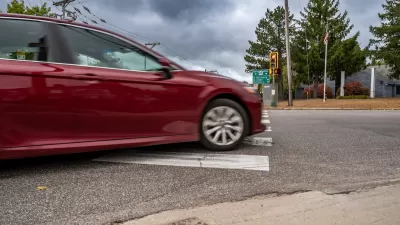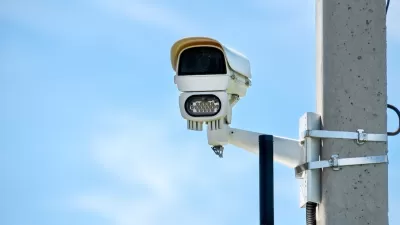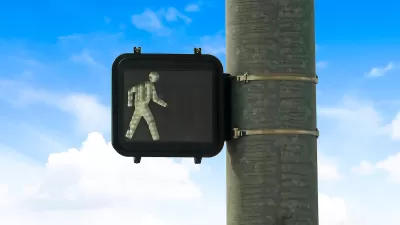While traffic fatalities continue to rise nationwide, Fremont has drastically reduced its crash rates in the five years since it launched its Vision Zero project.

Five years after committing to a bold Vision Zero plan, Fremont, California is seeing impressive results. As Brian Hendershot reports, the city "has an average fatality rate of 2.1 traffic deaths per 100,000 residents annually — significantly fewer than California and the U.S., where rates have risen to 9.1 and 11, respectively."
The Fremont Public Works Department — which includes Transportation Engineering, Pavement Maintenance Program, and Street Maintenance — made extensive use of inexpensive, temporary, 'quick-build' projects to improve safety for drivers, pedestrians, cyclists, and transit users alike in a relatively short period of time. The department also restriped 47% of the city’s arterial roadways, built protected intersections, upgraded dozens of crosswalks with short-term, reduced speeds in more than 50 street segments, converted its streetlights to use 'white' LED lights, and decreased the number of lanes in several roadways.
"Initially, Fremont’s Vision Zero was achieved with zero new funding commitments or dedicated staff positions. Instead, existing resources were redirected from projects that did not serve the city’s new goals." Later, "[t]he city was able to build on the success of those early years and attract grant funding for higher-cost projects, such as raised cycle tracks and protected intersections.
For its efforts, Fremont received the 2021 'Transportation Safety Achievement' award from the National Institute of Transportation Engineers (ITE) organization and 'Project of the Year' award from the Western ITE District.
Hendershot attributes Fremont's success to its "strong internal, cross-agency partnerships" and its reliance on "high-quality quantitative and qualitative data" in decision-making. For example, thanks to a robust crash mapping program, the city's transportation engineers "typically receive crash reports within 30 days of a crash — far quicker than in many other cities, where the wait may be a year or more after a crash occurs." This data-driven, proactive approach to Vision Zero allowed the city "to dramatically increase traffic safety at a time when traffic fatalities were increasing regionally and nationally."
For another example of Vision Zero progress (amid numerous examples of failures) see also Hoboken, New Jersey. For a reminder what measures can make Vision Zero a reality, see a Planetizen article written by Angie Schmitt earlier this year.
FULL STORY: Traffic fatalities across the US rose in 2020 but not in Fremont. What did the city do differently?

Alabama: Trump Terminates Settlements for Black Communities Harmed By Raw Sewage
Trump deemed the landmark civil rights agreement “illegal DEI and environmental justice policy.”

Planetizen Federal Action Tracker
A weekly monitor of how Trump’s orders and actions are impacting planners and planning in America.

The 120 Year Old Tiny Home Villages That Sheltered San Francisco’s Earthquake Refugees
More than a century ago, San Francisco mobilized to house thousands of residents displaced by the 1906 earthquake. Could their strategy offer a model for the present?

LA’s Tree Emergency Goes Beyond Vandalism
After a vandal destroyed dozens of downtown LA trees, Mayor Karen Bass vowed to replace them. Days later, she slashed the city’s tree budget.

Sacramento Leads Nation With Bus-Mounted Bike Lane Enforcement Cameras
The city is the first to use its bus-mounted traffic enforcement system to cite drivers who park or drive in bike lanes.

Seattle Voters Approve Social Housing Referendum
Voters approved a corporate tax to fund the city’s housing authority despite an opposition campaign funded by Amazon and Microsoft.
Urban Design for Planners 1: Software Tools
This six-course series explores essential urban design concepts using open source software and equips planners with the tools they need to participate fully in the urban design process.
Planning for Universal Design
Learn the tools for implementing Universal Design in planning regulations.
Ada County Highway District
Clanton & Associates, Inc.
Jessamine County Fiscal Court
Institute for Housing and Urban Development Studies (IHS)
City of Grandview
Harvard GSD Executive Education
Toledo-Lucas County Plan Commissions
Salt Lake City
NYU Wagner Graduate School of Public Service





























